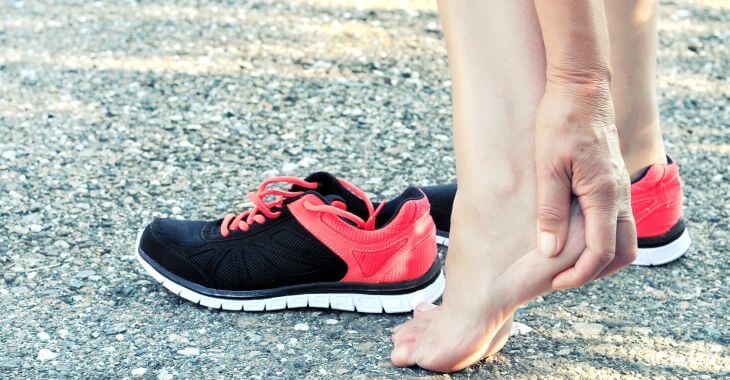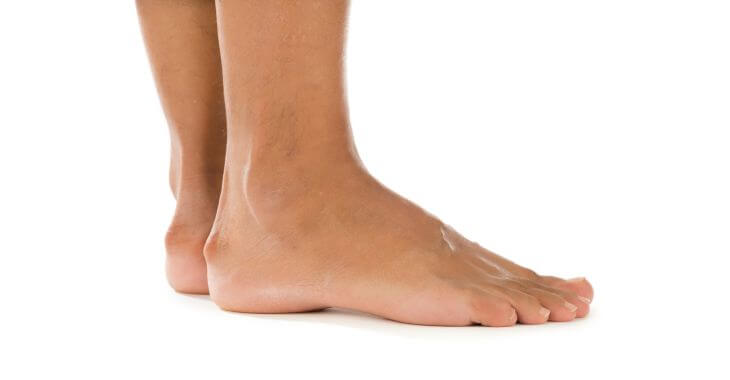Why Do I Get Back of Heel Pain After Running?

If you are feeling pain in the back of your heel after a run, you are not alone. This type of discomfort is common among runners and can have several causes. If you have been wondering, “Why do I get back of heel pain after running?” there could be a variety of reasons.
Common Reasons for Heel Pain Post-Run
The back of the heel is where your Achilles tendon connects to the heel bone. This area is prone to irritation from repetitive stress, like running. The following are common conditions that can cause back of heel pain after running.
Achilles Tendonitis
Achilles tendonitis is one of the most common causes of pain in the heel after running. It’s often due to overuse or a sudden increase in running intensity. This condition causes inflammation in the tendon, resulting in stiffness, swelling, and a dull ache or sharp pain at the back of the heel.
Haglund’s Deformity
Also known as “pump bump,” this bony enlargement at the back of the heel can become irritated by pressure from shoes, especially in runners. Running with tight or stiff shoes can rub against this area, inflaming the tissue and causing ongoing pain in the heel after running.
Bursitis
Retrocalcaneal bursitis affects the small fluid-filled sac (bursa) between your heel bone and Achilles tendon. It can become inflamed from repetitive motion. The pain is often felt deep in the back of the heel and worsens with activity, particularly after long-distance runs or sprints.
Heel Spurs
Heel spurs are calcium deposits that cause a bony protrusion on the underside or back of the heel. They can cause irritation after repetitive impact. Spurs often form alongside plantar fasciitis or tendonitis and may not hurt unless inflamed by physical activity like running.
Risk Factors for Heel Pain in Runners
Several factors may increase your risk for developing heel pain after running, even if you are an experienced runner or in good shape. Consider the following if you are experiencing pain in the back of the heel after running:
- Poor Footwear: Wearing worn-out or unsupportive running shoes can strain your heel and Achilles tendon. Choose shoes with good cushioning and heel support.
- Sudden Mileage Increase: Ramping up your weekly miles or intensity too quickly is a common trigger for overuse injuries like tendonitis and heel pain.
- Running Form: Improper technique or landing heavily on your heels can place stress on the back of the foot. A gait analysis can help you identify issues.
- Tight Calf Muscles: Limited flexibility in your calves increases strain on the Achilles tendon and heel. Regular stretching helps prevent tightness.
When to See a Specialist
Persistent or sharp pain in the heel after running isn’t normal. If rest and home care don’t help after a few days, see a medical professional. Ignoring heel pain can lead to chronic injuries. Achilles tendon ruptures or severe bursitis may require more extensive treatment if not caught early.
Treatment Options for Heel Pain
Fortunately, most causes of heel pain from running can be treated conservatively with rest, physical therapy, and supportive care. The following are some of the treatments that may be recommended:
- RICE Method: Rest, ice, compression, and elevation can help reduce inflammation and discomfort in the first 48–72 hours after pain begins.
- Footwear Modifications: Switch to shoes with better heel support or try orthotic inserts. A padded heel lift can reduce strain on the Achilles tendon.
- Stretching and Strengthening: Daily calf stretches and Achilles tendon exercises can improve flexibility and reduce stress on the heel area during your runs.
- Physical Therapy: A physical therapist can create a rehab program tailored to your condition, helping you heal faster and prevent future issues.
- Anti-Inflammatory Medications: Over-the-counter NSAIDs like ibuprofen can help relieve pain and swelling associated with tendonitis or bursitis.
Preventing Back of Heel Pain
Once you have recovered from your back of heel pain, preventing future episodes of heel pain is essential for maintaining your running routine and avoiding setbacks.
Warm-Up Properly: Start each run with a dynamic warm-up and finish with stretching. This helps improve blood flow and flexibility in the calves and Achilles.
Gradual Mileage Increases: Follow the 10% rule: increase your weekly mileage by no more than 10% to avoid overloading your feet and heels.
Cross-Training: Incorporate low-impact activities like cycling or swimming into your routine to reduce repetitive stress on the heels.
Replace Worn Shoes: Running shoes should be replaced every 300–500 miles. Old shoes lose support and shock absorption, increasing your injury risk.

Experiencing pain in the heel after running is frustrating, but it’s also common and treatable. Most cases resolve with proper care and adjustments. If you are struggling with chronic heel pain, consult your primary care doctor or sports medicine specialist to get a personalized recovery plan.
The information provided on this website, including text, graphics, images, and other materials, is intended solely for informational purposes and should not be used as a substitute for professional medical advice, diagnosis, or treatment.


)